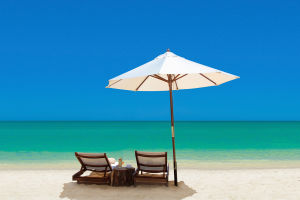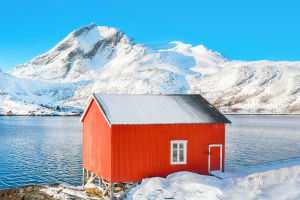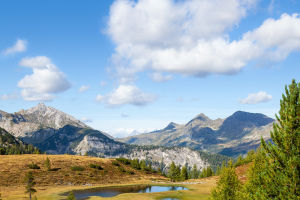The Palouse region, spread across southeastern Washington and parts of Idaho, is an enchanting landscape of rolling hills, golden wheat fields, and quaint farms. Known for its distinctive patchwork of amber fields and green pastures.
The Palouse is a paradise for photographers, nature lovers, and anyone seeking a peaceful countryside escape. This guide will help Lykkers plan a visit to this scenic destination with information on the best spots, travel tips, and practical details.
Why Visit the Palouse?
1. Unique Scenic Beauty
The Palouse stands out for its surreal landscape that looks like a painting. The hills are not only picturesque but change colors with the seasons, turning golden in summer and a vivid green in spring. It’s a captivating sight that leaves visitors in awe.
2. Photography Haven
The Palouse is a favorite destination for photographers due to its natural patterns and stunning light effects. Sunsets here are particularly striking, with warm hues that paint the hills in brilliant colors, creating an idyllic backdrop for any photo.
3. A Peaceful Rural Escape
Unlike more bustling tourist spots, the Palouse offers quiet, open spaces, charming small towns, and a serene vibe that allows visitors to unwind and reconnect with nature.
Key Destinations in the Palouse
1. Steptoe Butte State Park
Steptoe Butte offers panoramic views of the Palouse hills and is a must-visit for those wanting a bird’s-eye view of the landscape. The drive to the summit is scenic and offers several viewpoints. It’s best to visit around sunrise or sunset when the hills are bathed in soft light, enhancing the textures and shadows across the landscape.
Entry Fee: $10 for a day pass or a $30 annual Discover Pass
Open Time: Year-round, sunrise to sunset
Traffic Time/Price: 1.5 hours from Spokane; parking is free with the Discover Pass.
2. Palouse Falls State Park
This park is home to Palouse Falls, a breathtaking 198-foot waterfall that’s especially dramatic during spring when snowmelt boosts its flow. The falls are surrounded by basalt cliffs, creating a striking contrast with the lush greenery around. There are several viewpoints to admire the falls, and the area is great for picnicking.
Entry Fee: $10 day pass or a $30 annual Discover Pass
Open Time: Year-round, sunrise to sunset
Traffic Time/Price: About 2 hours from Pullman; ample parking with the Discover Pass.
3. Pullman, Washington
Pullman is a charming town nestled in the heart of the Palouse and home to Washington State University. It’s a great base for exploring the region, with amenities like hotels, restaurants, and visitor centers. Be sure to explore the university campus, which boasts beautiful landscaping and art installations. Pullman also hosts annual events such as the Lentil Festival in August, celebrating the area’s agricultural heritage.
Entry Fee: Free to explore
Open Time: Public areas accessible year-round
Traffic Time/Price: About 15 minutes from the Palouse Scenic Byway; local transit available.
Travel Tips for Lykkers
Best Time to Visit
The Palouse region is beautiful year-round, but each season offers a unique experience. For golden landscapes, visit in late summer (July to September) when the wheat fields are ripe. Spring (April to June) brings lush, green fields, perfect for vibrant photos. If you’re looking to capture foggy mornings, fall offers excellent conditions for atmospheric photography.
Getting Around
Renting a car is essential for exploring the Palouse, as public transportation is limited. The Palouse Scenic Byway is a well-marked route that guides you through the most scenic parts of the region, allowing you to stop and explore as you wish. Car rentals from Spokane average around $40–$60 per day.
Prepare for Limited Services
Many areas of the Palouse are rural, and services like restaurants, gas stations, and restrooms are limited. It’s best to bring snacks, water, and other essentials, especially if you plan to spend a lot of time driving and exploring.
Fun Facts About the Palouse
One of the World’s Top Wheat Producers
The Palouse is one of the leading wheat-producing regions globally. Its rich volcanic soil and unique topography make it ideal for growing wheat, lentils, and other crops. Pullman’s annual Lentil Festival celebrates this agricultural heritage.
A Natural Wonder Created by Erosion
The Palouse hills were formed over thousands of years by wind-blown silt called loess, giving the landscape its smooth, rolling appearance. This geological process created the unique terrain that makes the Palouse so distinctive.
Wildlife and Bird Watching
The Palouse is home to diverse wildlife, including deer, hawks, and eagles. The area also attracts bird watchers, especially during migration seasons, when numerous bird species can be seen soaring over the hills.
Final Thoughts
The Palouse’s mesmerizing landscapes, charming small towns, and peaceful atmosphere make it an idyllic getaway for Lykkers seeking a slice of rural beauty. With its rolling hills, vibrant fields, and scenic parks, the Palouse is a hidden gem that promises a unique and tranquil experience.
From the heights of Steptoe Butte to the cascading Palouse Falls, every corner of this region invites you to pause, take in the view, and find peace in nature’s vastness.


